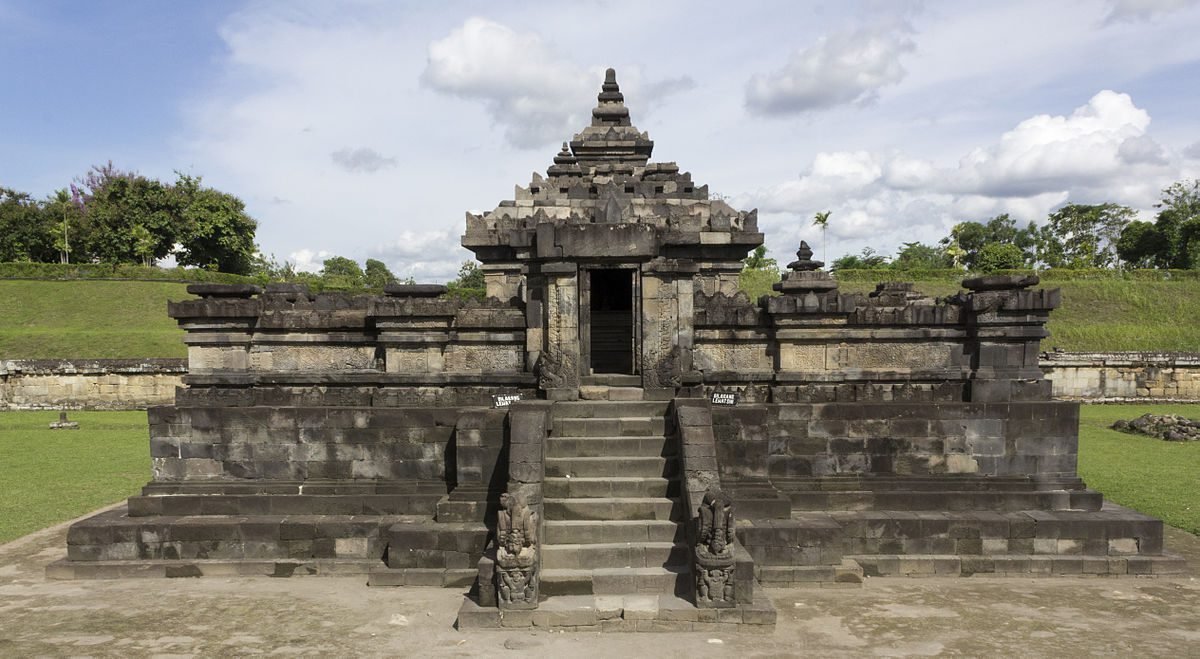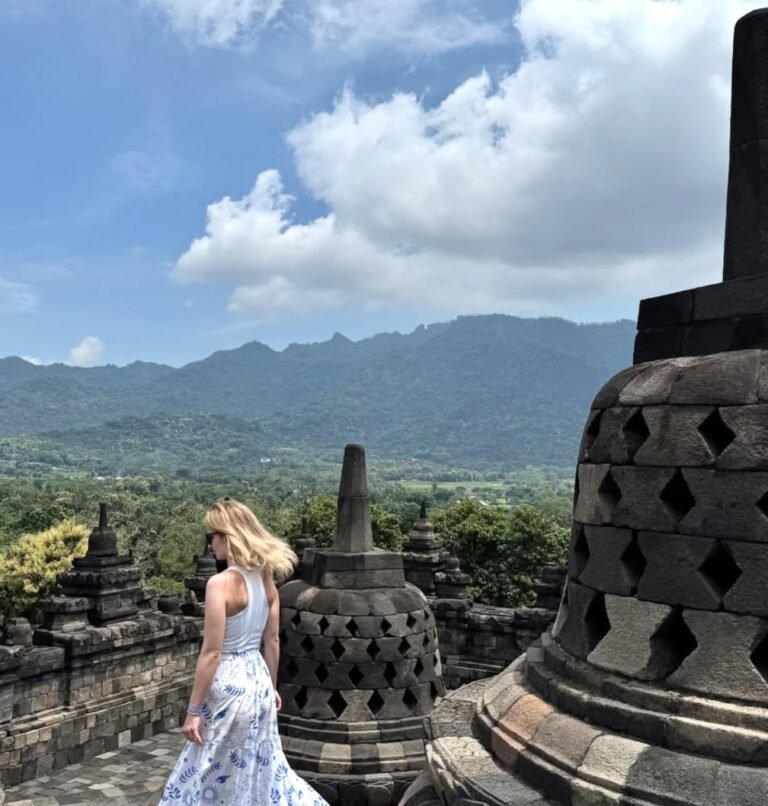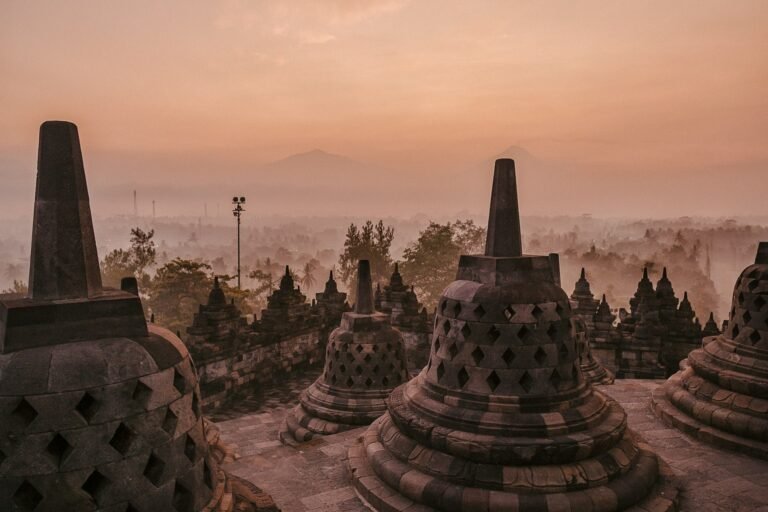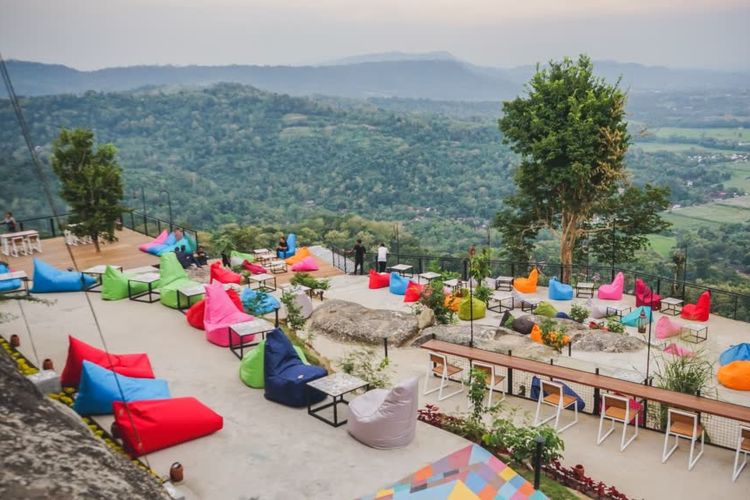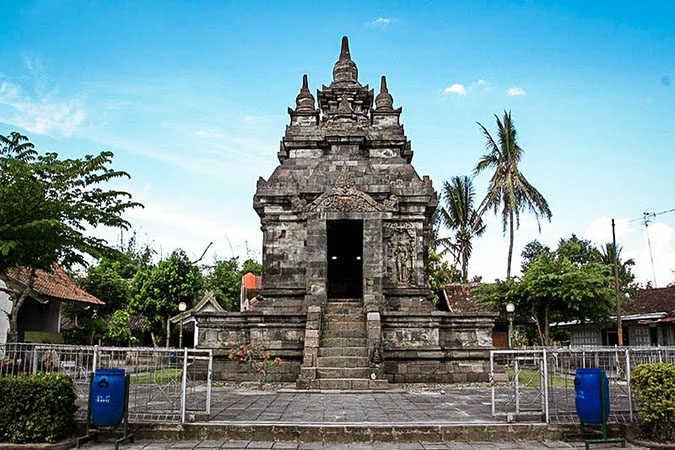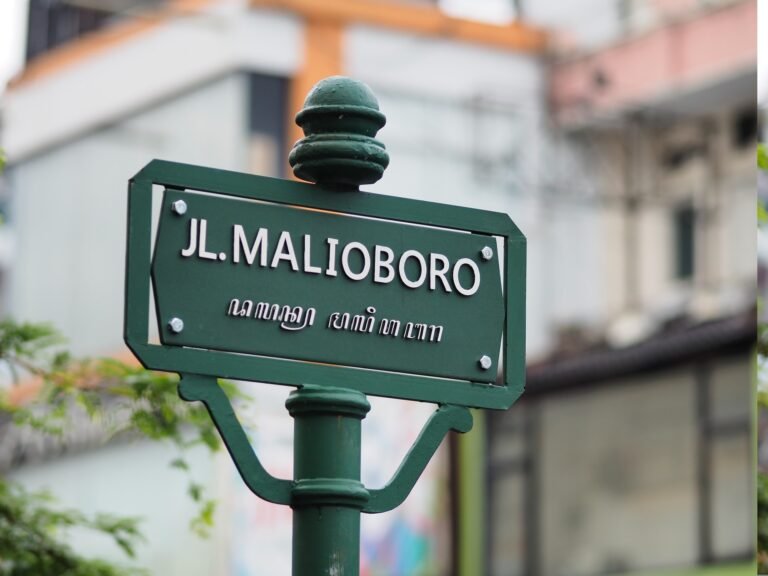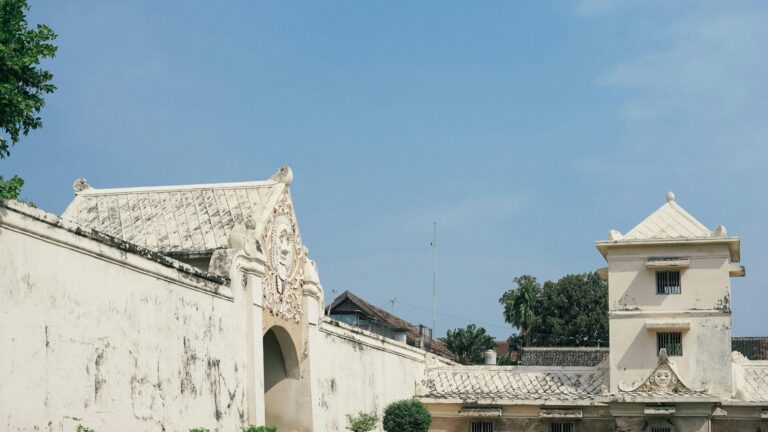Candi Sambisari’s got this intriguing disaster story that’s worth digging into.
Imagine this: the temple, chilling in Purwomartani, Kalasan, Sleman, was first discovered under a whopping 6.5-meter-thick layer of Merapi volcano’s earthy mess. And get this: that layer is considered the aftermath of a massive eruption in 1006.
The remnants of that buried layer are still hanging around today. When you swing by the temple, you’ll notice Sambisari sitting in a little bit, with its ground level lower than the surrounding area.
The deep base? That’s the OG ground layer from ancient times. The layer you see now? That’s the result of Merapi’s volcanic material settling down.
Just think about it – how crazy was that eruption to leave behind a layer that’s 6.5 meters thick? Or here’s another head-scratcher – how many times did Merapi blow its top to create a layer that deep? Wild stuff, right?
History
According to history buffs, Sambisari Temple is thought to have started its construction in the 9th century, around 812-838 AD, under the rule of King Rakai Garung. This conclusion comes from historical evidence dug up by the Archaeological Department.
The Sambisari Temple complex has one main temple and three smaller auxiliary temples. The main temple is this square-shaped beauty, measuring about 13.65×13.65 meters and around 7.5 meters tall.
The discovery of this gem is quite the tale. In 1966, a farmer named Karyowinangun from Sambisari Village stumbled upon it while tending to his fields.
His hoe hit something hard like a rock, and when he dug deeper, it turned out to be a chunk of a temple. And yup, they named it Sambisari after the village where this stunning piece of history was found.
The excavation and reconstruction of Sambisari Temple finally wrapped up in 1987. It took 21 years to bring this ancient relic from the Mataram Kingdom back to life.
During the temple excavation, they also uncovered some cool stuff like pottery, jewelry, metals, mirrors, and a handful of inscriptions. Talk about digging up a treasure trove!
How Does It Found?
So, Sambisari Temple had its big reveal thanks to a farmer just doing his thing, digging up his land back in 1966. Picture this: the dude’s hoe accidentally whacks into something solid, and it turns out it’s a chunk of temple rock.
He goes ahead and reports the find to the Archaeology Office in Prambanan. They roll in and sweep the area suspected to be temple territory, and sure enough, it looks like there’s a temple vibe going on.
Fast forward to the archaeology squad kicking off the excavation and reconstruction gig, and by 1987, they’ve got the whole thing sorted out. Talk about stumbling onto some ancient vibes while tending to the farm!
Sandisari Temple Architecture
Based on its architectural style and ornamentation, the Sambisari Temple resembles the Prambanan Temple with a Sivaistic religious background.
The main temple has Hindu deity statues, along with Lingga and Yoni. Just so you know, Lingga is a manifestation of Lord Shiva, while Yoni represents Shakti (Shiva’s consort).
Adding to the mix is a Durga Mahisasuramardhini statue in the northern part of the temple, Ganesha to the east, Agastya in the south, and Mahakala and Nandiswara as the gatekeepers.
There are three smaller auxiliary temples in front of the main temple. The middle measures 4.9 meters by 4.8 meters, while the northern and southern ones are 4.8 meters by 4.8 meters.
Sambisari Temple is entirely enclosed by a 50 x 48 m white stone wall. Each side of the wall has an entrance, but the northern entrance is closed.
In the first courtyard, eight dummy Linggas are placed in the eight cardinal directions. On the outer side of the surrounding wall, there’s a terrace that’s 8 meters wide, complete with stairs on all four sides.
Read More: Discovering Prambanan 2023: Opening Hours, Admission, and Legend
Location, Operational Hours, and Entrance Fees
Location: Jalan Candi Sambisari, Sambisari, Purwomartani, Kecamatan Kalasan, Kabupaten Sleman, Yogyakarta.
Operational hours: Tuesday-Sunday at 07.00-17.00 WIB.
Price: Rp5.000
From the heart of Yogyakarta or the zero-kilometer point, Sambisari Temple is just around 13.7 kilometers away. It gets even closer if you kick off your journey from Adisutjipto Airport, as the temple is just 3.7 kilometers away.
Start your adventure on the Jogja-Solo Highway until you hit a crossroads, one of which leads to Adisutjipto International Airport. Keep it straight from that crossroads until you hit another one and spot the Balai Diklat Keuangan Yogyakarta building.
Now, take a left and keep cruising north. The trip to the temple won’t take long, just 10 minutes, until you arrive in the temple area nestled among the local residences.
But, if your journey starts from Central Java, keep rolling until you cross the border into Yogyakarta. Head for Sleman and follow the road signs to the Sambisari Temple attraction above. Easy peasy!
Read More: Malioboro: The Heart of Jogja with Enchanting Magical Allure
What Makes It Attractive?
Sambisari Temple sits about 6.5 meters below ground, making it a hidden gem not immediately visible from a distance. But you know what? That’s part of the charm that draws in tourists.
You get to soak in the temple view from a bit of a high point. The scenery is legit stunning, with the temple surrounded by lush green grass that pops against the temple’s color.
And oh, the architecture! You can appreciate the beauty of these ancient Mataram Kingdom leftovers.
You’ll see statues with some serious historical value within the temple complex – like the Agastya, Ganesha, and the goddess Durga statues. It’s like a historical treasure trove in there!
What to do in Sambisari Temple?
This ancient Mataram Kingdom leftover is surrounded by a lush green carpet and reliefs carved from shrubs, adding serious aesthetics to your photos.
Some folks even turn it into a picnic spot because the landscape is jaw-dropping. Remember, keeping the temple clean is a must, so no littering.
The management’s got you covered with the facilities. There’s parking, a tourist info spot, temple info boards, gazebos, public toilets, snack shacks, chill-out zones, and loads of cool photo spots.
After exploring Sambisari Temple, I visited the culinary scene at Warung Soto, Mbah Katro, which is famous for its tasty Soto soup. Besides the photo, you can dive into various side dishes like skewered intestines, quail egg skewers, tempeh, and more.
Let’s Explore Yogyakarta!
Embark on an unforgettable journey to Java, Indonesia, where a world of wonders awaits! Java, the heart and soul of Indonesia, is a treasure trove of diverse landscapes, rich cultural heritage, and breathtaking experiences.
Find out the package now from Yogyakarta Tours:
- 1 Day Tours:
- Multiday Tours
Author: Pramitha Chandra

